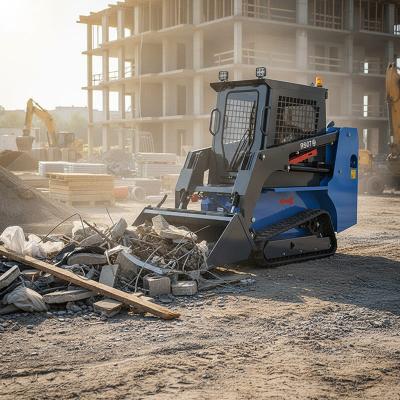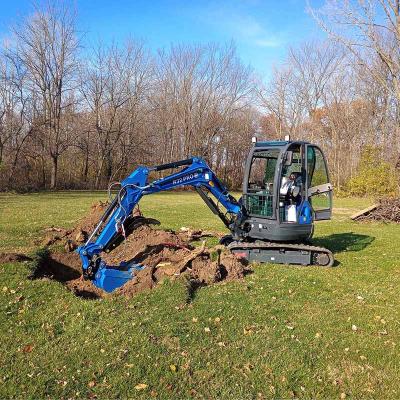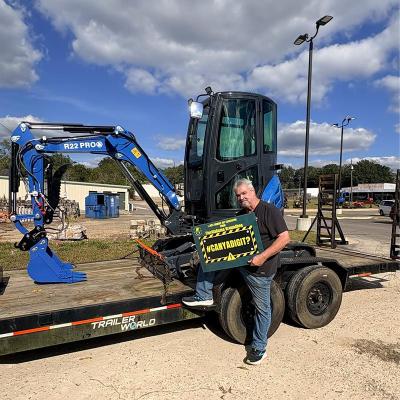The Complete Guide to Mini Skid Steers and Attachments
What Is a Mini Skid Steer
A mini skid steer is a smaller, more compact version of a traditional skid steer loader. Designed for maneuverability and efficiency, it offers similar performance to full-size models but with a reduced footprint. Available in both wheeled and tracked versions, mini skid steers can easily fit through standard residential gates and navigate tight spaces that large equipment cannot access. This makes them an essential tool for contractors and landscapers working in urban or confined environments.
Mini skid steers have evolved from niche landscaping tools into one of the most valuable pieces of compact machinery used across multiple industries. When paired with the right attachments, these versatile machines can perform digging, lifting, trenching, grading, and clearing — all within limited spaces.
Benefits of Using a Mini Skid Steer
Mini skid steers offer numerous advantages compared to full-sized loaders, making them a practical investment for small and large contractors alike.
Compact and Maneuverable
Their small size allows them to operate efficiently in narrow spaces such as backyards, indoor environments, and between buildings. With a zero-turn radius, operators can make quick turns and navigate around obstacles with ease, improving job site productivity.
Transport and Logistics
Most mini skid steers can be transported using standard utility trailers, eliminating the need for special permits or commercial driver’s licenses (CDLs). This reduces transportation costs and simplifies logistics for contractors managing multiple job sites.
Cost Efficiency
Mini skid steers are significantly more affordable in terms of purchase price, fuel consumption, and maintenance costs. Their operational efficiency makes them ideal for small to medium-sized businesses seeking high returns on a moderate investment.
Versatile Attachments
A wide selection of attachments—such as augers, buckets, stump grinders, and brush cutters—allows a single machine to perform multiple tasks. This flexibility enhances overall productivity and equipment utilization.
Common Industries and Applications
Mini skid steers are used across a variety of industries. Their adaptability allows professionals to complete multiple types of work with a single machine.
Landscaping
These compact loaders excel in digging, leveling, and trenching tasks. By using specialized landscaping attachments such as augers or brush cutters, operators can prepare flowerbeds, install trees, and spread mulch efficiently. Their controlled power output ensures delicate yet effective work in garden and turf projects.
Construction
Contractors rely on mini skid steers for material handling and site preparation in small or confined areas. From transporting supplies to digging foundations, these machines provide essential support for remodeling, demolition, and new construction projects.
Hardscaping
Mini skid steers are indispensable in hardscape installation. They help transport pavers, concrete blocks, and materials for patios, retaining walls, and walkways—reducing manual labor and improving job efficiency.
Snow Removal
In winter, mini skid steers equipped with snow blades or pushers are valuable for clearing driveways, sidewalks, and small commercial lots. Their compact size allows for precise control in tight or crowded areas.
Agriculture
Farmers use mini skid steers for digging, moving soil, and transporting feed or materials. Attachments like pallet forks and soil conditioners significantly improve workflow and reduce manual effort on the farm.
Types of Mini Skid Steer Attachments
Mini skid steer attachments extend the machine’s versatility, allowing it to handle earthmoving, vegetation control, snow management, and landscaping.
Earthmoving Attachments
General Buckets: Ideal for everyday material handling, available in standard, rock, or multipurpose designs.
Augers: Hydraulic augers simplify post hole digging and tree planting.
Trenchers: Compact trenchers efficiently dig narrow channels for irrigation, cables, and pipelines.
Vegetation Management Attachments
Brush Cutters: Designed to tackle dense weeds, small trees, and brush efficiently.
Stump Grinders: Remove stumps below ground level using powerful hydraulic systems.
Snow Attachments
Snow Blades and Pushers: Move and pile snow quickly, perfect for clearing open spaces.
Snow Blowers: Collect and blow snow away from work areas for thorough clearing.
Landscaping Attachments
Soil Conditioners: Break compacted soil and prepare surfaces for planting.
Land Planes and Landscape Rakes: Level soil and remove debris to create smooth surfaces.
Seeders: Evenly distribute seeds for lawns and agricultural plots.
Specialty Tools
Pallet Forks: Allow easy transport of heavy materials, pallets, and supplies on job sites.
Choosing the Right Mini Skid Steer Attachment
Selecting the proper attachment is essential for optimal performance and safety.
Match Tools to Tasks
Ensure that each attachment aligns with your project needs. For instance, use trenchers for narrow digging and brush cutters for vegetation removal.
Check Hydraulic Flow
Each mini skid steer has specific hydraulic flow requirements. Verify that your machine’s flow matches the attachment’s demand to avoid performance loss or damage.
Compatibility and Mounting Systems
Confirm that your attachment’s mounting plate fits your skid steer. Some brands, like Bobcat or ASV, may require adapter plates for cross-brand use. Always review your manufacturer’s compatibility chart before purchase.
Attachment Weight
Avoid exceeding the machine’s rated operating capacity. Overloading can cause wear, reduce stability, or lead to tipping hazards.
Maintenance and Care
Regular maintenance extends the lifespan of both your mini skid steer and its attachments.
Routine Inspection: Before and after each use, check for wear on tires, tracks, and hydraulic lines.
Hydraulic Care: Maintain proper fluid levels and clean hoses to prevent leaks.
Lubrication: Keep pivot points and moving parts well-greased to minimize wear.
Cleaning: After each job, remove dirt, mud, and debris from both the machine and attachments.
Storage: Store attachments in a dry environment to prevent corrosion and mechanical damage.
Safety and Best Practices
Safety should always come first when operating mini skid steers.
Always shut off the engine and secure the attachment before installation or removal.
Do not exceed the rated load capacity or operate on unstable ground.
Operators must wear protective gear and receive proper training before use.
Frequently Asked Questions
What size projects are suitable for a mini skid steer?
Mini skid steers are ideal for jobs involving 1–20 cubic yards of material, including residential landscaping, small construction, and maintenance tasks.
Are mini skid steer attachments universal?
Most modern attachments use standardized mounting plates, but hydraulic and brand-specific differences may require adapters.
Can mini skid steers use full-size attachments?
No. Full-size skid steer attachments are typically too heavy and require higher hydraulic flow rates than mini units can provide.
What maintenance is required?
Daily checks of fluid levels, lubrication points, and visual inspections are recommended. Weekly deep cleaning and monthly replacement of filters help ensure long-term reliability.


